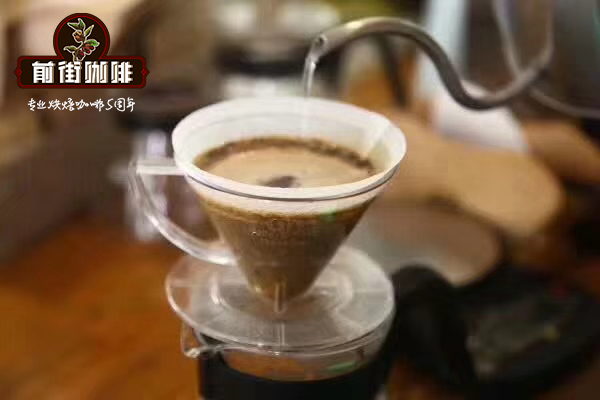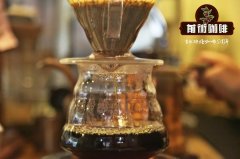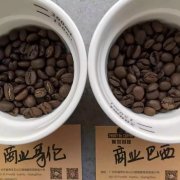Why is the coffee bean flavor of Arabica better than that of Robusta?

For information, please follow the coffee workshop (Wechat official account cafe_style)
The two most important reactions are caramelization (caramelization, oxidation and browning of sugars) and Mena (Maillard reaction, reaction of amino acids with sugars). Both reactions require the participation of sugars, and the rich sucrose in raw beans provides the materials needed for these two reactions. Previous studies also found that there was a positive correlation between sucrose content and coffee bean flavor. From the table below, it can be seen that the content of sucrose (Sucrose) in Arabica is twice as much as that in Robusta, which also explains why the flavor of Arabica coffee beans is better than that of Robsta.
Caramelization reaction
After drinking coffee, the dry coffee stains at the bottom of the cup were arranged into interesting patterns, and suddenly the sweet smell of caramel flashed for a moment, and then smell it carefully, the sweet smell of caramel came from the bottom of the cup, why is there the sweetness of caramel? Later, I found that the black coffee itself is really sweet, especially the sweetness of caramel! But the sweetness of each kind of coffee varies depending on the variety of beans and the way it is roasted.
The sugar in coffee beans is caramelized at about 170 ℃, which is exactly the melting point of sucrose (185 ℃) and the temperature of the explosion stage when coffee beans are roasted. The product of caramelization is divided into two parts:
The dehydration product of sugar is caramel or sauce.
The pyrolysis products are mainly volatile aldehydes and ketones.
Generally speaking, fire-roasted aroma, caramel and color are produced in the caramelization reaction, as well as other aromatic substances such as maltol, Cyclotene, furan and so on. These compounds can also be found in red wine, fruit juices, cream and other foods.
However, if caramel is too much in the baking process is not a good thing, but will cause carbonization, making the coffee dry and choking. If the caramel is not enough, it will make the aroma monotonous and lack of layers.
The sugar in coffee beans is caramelized at about 170 ℃, which is exactly the melting point of sucrose (185 ℃) and the temperature of the explosion stage when coffee beans are roasted. The product of caramelization is divided into two parts:
The dehydration product of sugar is caramel or sauce.
The pyrolysis products are mainly volatile aldehydes and ketones.
Generally speaking, fire-roasted aroma, caramel and color are produced in the caramelization reaction, as well as other aromatic substances such as maltol, Cyclotene, furan and so on. These compounds can also be found in red wine, fruit juices, cream and other foods.
However, if caramel is too much in the baking process is not a good thing, but will cause carbonization, making the coffee dry and choking. If the caramel is not enough, it will make the aroma monotonous and lack of layers.
Important Notice :
前街咖啡 FrontStreet Coffee has moved to new addredd:
FrontStreet Coffee Address: 315,Donghua East Road,GuangZhou
Tel:020 38364473
- Prev

The relationship between water temperature and coffee, what is the different taste of brewing coffee at different temperatures?
For information, please pay attention to the water used by the coffee workshop (Wechat official account cafe_style) to extract coffee. How does the water temperature too high or too low affect the flavor of coffee? Once tried to taste a coffee, coffee is newly opened, freshness can be guaranteed, but somehow the aroma, mellow, acidity can hardly be felt, the initial guess is the cause of the water temperature is too high, but can not be determined
- Next

Why did you choose 60 ℃ for latte foam? What is the foam temperature suitable for latte?
Yesterday we talked about the effect of temperature on milk bubbles, and found that even if the temperature of milk bubbles exceeds 70 ℃, even if not deliberately foaming, the bubbles will expand rapidly and continue to tumble, while if the temperature is too low, the bubbles will be thicker and defoaming faster; today, Qianjie Coffee would like to talk to you about how the taste of lattes will change when the foam temperature is different. Front street
Related
- Beginners will see the "Coffee pull flower" guide!
- What is the difference between ice blog purified milk and ordinary milk coffee?
- Why is the Philippines the largest producer of crops in Liberia?
- For coffee extraction, should the fine powder be retained?
- How does extracted espresso fill pressed powder? How much strength does it take to press the powder?
- How to make jasmine cold extract coffee? Is the jasmine + latte good?
- Will this little toy really make the coffee taste better? How does Lily Drip affect coffee extraction?
- Will the action of slapping the filter cup also affect coffee extraction?
- What's the difference between powder-to-water ratio and powder-to-liquid ratio?
- What is the Ethiopian local species? What does it have to do with Heirloom native species?

